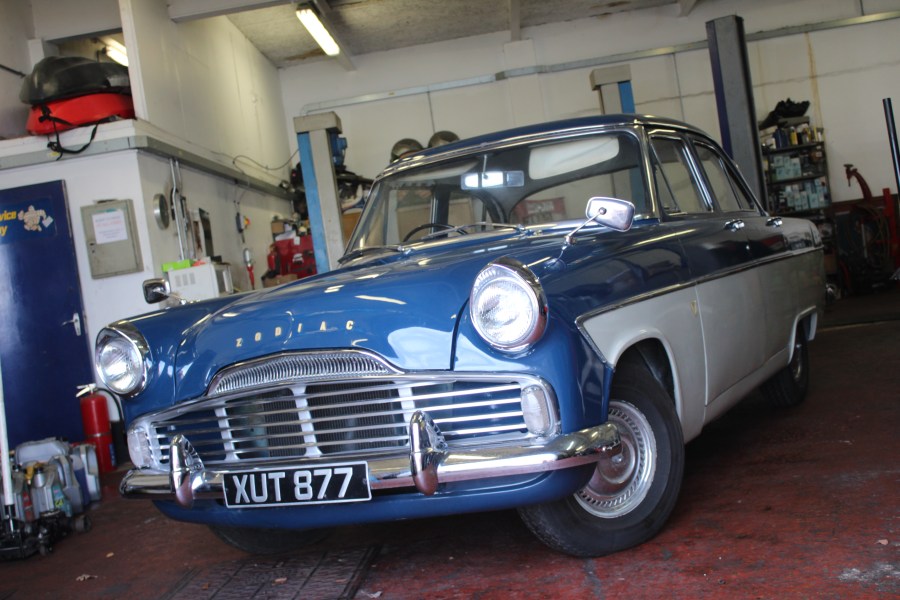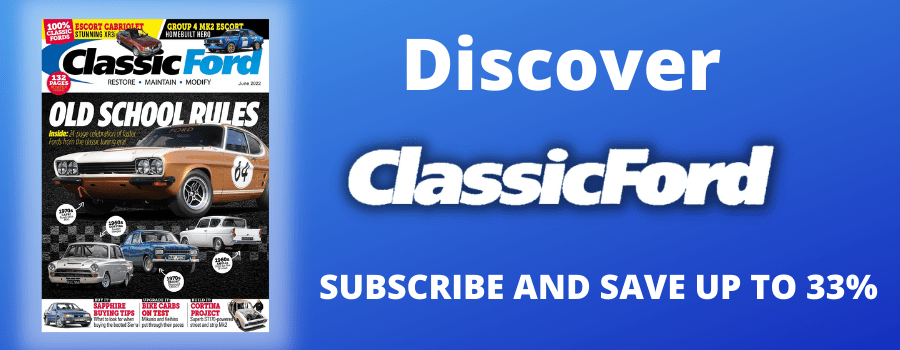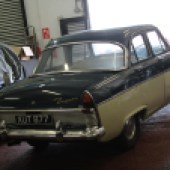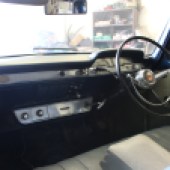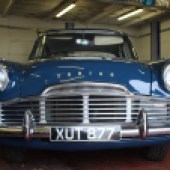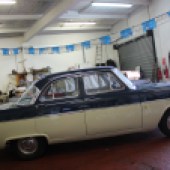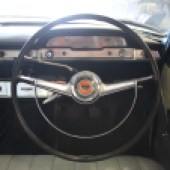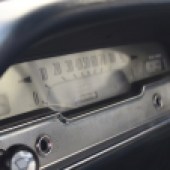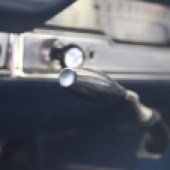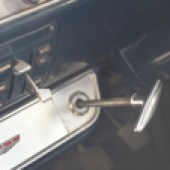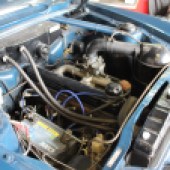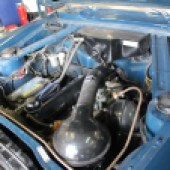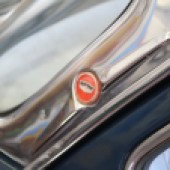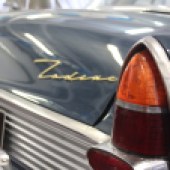Can the Ford Zodiac Mk2 still pass muster as a desirable classic Ford? We take to the road in a 1961 ‘Lowline’ example to find out
Words and images: Jack Grover With thanks to: Trojan Cars
The original ‘big Ford’ range of 1951 had been surprisingly advanced in engineering – a unitary platform (albeit with welded-in chassis rails underneath), new OHV engines, Macpherson strut independent suspension and spacious cabins. In quick succession Ford filled out the range with the basic four-cylinder Consul, the six-cylinder Zephyr and then, from 1953, the ‘Zephyr Zodiac’ with two-tone paint, leather seats, some items that were optional on the Zephyr as standard (such as a heater and windscreen washers) and an engine in a slightly higher state of tune. This flagship model was extremely desirable and prestigious in its time, occupying that crucial ‘aspirational but attainable’ price point.
By 1956 the big Fords were still more than good enough in terms of engineering but their loaf-like styling was become passe. The Mk2 range was therefore little more than a comprehensive restyle of the originals, with much more extravagant and consciously ‘American’ looks, complete with full-width grilles, wraparound rear windows and tail fins. The fundamentals remained the same, but the platform had a few extra inches in the wheelbase and the track, which greatly improved the cars’ roadholding and ride quality as well as adding to the boot and cabin space. The six-cylinder engine in the Zephyr and Zodiac (now named as a discreet model in its own right) was slightly enlarged, taking power to a lazy but useful 86bhp.
A mid-life update in 1960 brought front disc brakes, a slightly lower and flatter roofline and a more modern instrument fascia. These later models are known as the ‘Lowline’ cars. The American styling dated quickly in the 1960s and the Mk2s quickly became regarded as rather spivvy and the preserve of rockabillies – a situation which kept values low until well into the 21st century.
A prime example of Ford’s US-inspired 1950s styling, the exact history of this ‘Lowline’ Zodiac is patchy. A few years ago it was based in Kent as a for-hire wedding car. Trojan Cars then acquired it, performed some bodywork repairs and interior smartening-up and sold it on. Unfortunately the new owner passed away not long after taking possession of the Ford, and so it came back to Southsea to await its next custodian. It didn’t have to wait long – in fact, it sold while we were on the premises!
If nothing else that proves how strong demand for these big Fords remains after more than six decades. This Zodiac is, in terms of metalwork, mostly original but it has had some attention as you’d expect for a car of this age. The odometer showed 37,999 miles when we saw it, and the modest history with the car and its overall condition suggest that this could be genuine.
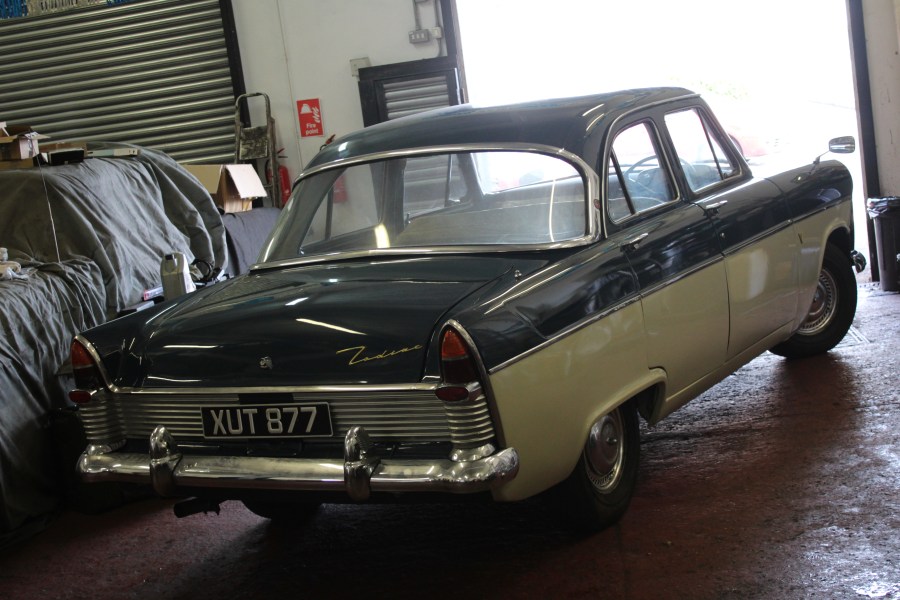
This would mean that the body work previously carried out by Trojan was required by sheer age rather than mileage or neglect – and this would fit with the general appearance and ‘feel’ of the car. The outer rear wheel arches were cut out and new ones welded in, while the sills were also replaced in their entirety even though rust had only really got into the rear end. The inner rear arches, on the other hand, are original and still solid with the factory paint on them.
The Zodiac was then treated to a full respray in the original blue over cream scheme, with all the brightwork re-chromed and the trim piece running below the rear lights and boot lid being shotblasted and powder coated. At the other end, the leading edge of the bonnet was replated to remove some areas of pitting and early signs of rust. Being done to a high standard only a few thousand miles ago, this all still looks extremely smart – so smart that we chose to photograph the Zodiac in the Trojan Cars workshop rather than in the location chosen for the other cars we drove during our visit – a seaside car park, which on that particular day had large amounts of sand being blown across it by an onshore gale.
The interior hasn’t had the same amount of work put into it as the exterior, which means it does not present as well. But while it’s not perfect, it has an attractive patina and looks as you’d expect a 62-year-old car with 40,000 or so miles on it to look. Being a Zodiac it has leather benches in two-tone blue/white with gold piping. The colour has worn out of the leather in some small places on the driver’s side, and there are some wrinkles in the material but it is still in good condition and hasn’t lost its support or stuffing.
The passenger’s side is less worn and the rear seats are better still. A replacement dashtop has replaced the rather sun-damaged and peeling original, while the headlining is original and free from stains or tears but has been reattached to the roof since it had started to fall away. The plastic steering wheel rim and horn rings are in great condition, as are all the door handles, window winders, switches and arm rests.
The structure is clearly in good condition when lifting the bonnet – the crucial inner wings, strut tops and the integral braces between them and the bulkhead are all solid, with no signs of previous welding. The 2.6-litre straight-six has recently had its head gasket replaced and a new radiator fitted. Otherwise it’s untouched and original. The wiring has clearly had some additions and replacement sections (some aftermarket fuse holders are visible) but it all looks safe and in good condition, and a new battery has recently been fitted. The same goes for the coolant hoses, fuel lines and vacuum pipes.
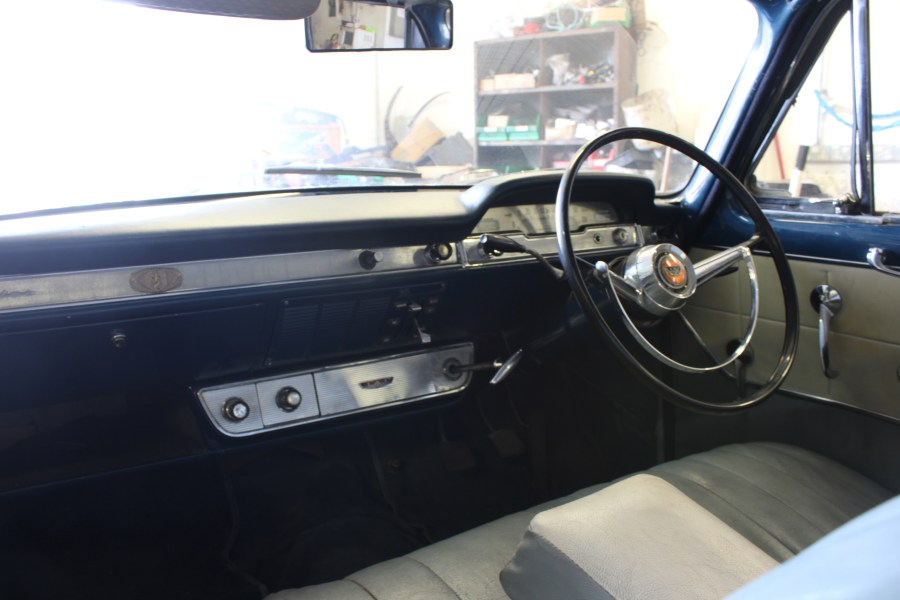
The Zodiac’s engine runs with a slight tapping that stops us giving it full marks, but it’s a smooth and quiet noise that may just indicate the rocker clearances need closing up a bit. It certainly doesn’t affect how the engine itself runs or how the big Ford goes. Sliding onto the soft bench seat and looking down the sculpted bonnet is a real treat for fans of 1950s style. You also can’t get much more 1950s than grasping a big thin-rimmed steering wheel with one hand and handling a three-speed column change gearbox with the other.
Restricted to the Victorian streets of Southsea, the Zodiac wasn’t really able to show us what it could do. But in this environment, it lived up to its reputation for being easy and relaxing to drive. The engine pulled well at low speeds, making the first gear essentially redundant. That gearchange shifted easily and surprisingly accurately. When a clear stretch of street was ahead, the Ford picked up its skirts well, suggesting that the Zodiac’s famously strong performance was still very much in evidence. Temperature remained well under control and all the warning lights stayed out as they should.
The box-based steering is never going to be especially tactile, and it needed quite a bit of wheel-shuffling to navigate Southsea’s many mini roundabouts, but it seemed free of unwanted slack or slop and the Zodiac tracked along the road very nicely, needing only a casual hand on the wheel rim to stay on course. It also rode very nicely, with a restrained bobbing motion over the speed bumps and no excessive roly-poly antics through the traffic restrictors. The running gear did its job in silence, with no knocks or groans suggesting worn bushes or seized springs.
The glamorous looks and strong performance of the Mk2 Zodiac have always been appealing, and as a no-nonsense classic that will keep pace with modern traffic and turn heads it makes a strong case for itself. There could be no better choice for a ‘turn-key’ classic saloon car than this one. It needs no work or expenditure as it is and would provide excellent service. There is perhaps slight room for improvement in the long term with the engine and interior but equally the less pedantic owner could leave these as they are and just enjoy a lovely example of a classic Ford.

